Two roads meet in the urban jungle.
There we set up shop with grit.
Each morning brings new twists and turns,
No guarantees, just lessons learned.
The largest employer in India is not Bharatbhai Sarkar, the Railways, or any of our current oligarchs. It’s the streets of India, where people help each other through time-tested informal networks. Every major crossroads, naka, chowk, mukku, or X road in our cities and small towns is home to one such network that provides daily employment to millions of Indians, one or two generations away from caste-enforced agricultural labour or trade in the hinterland, now building our cities or offering cheap labour to factories.
In the last century, which ended with the death of labour, they would’ve had a little or some voice. In the current century, they are invisible, like cycles and pedestrians. And once you notice them, you cannot unsee the thousands you will find at major squares, railway stations, gates of industrial estates, and almost everywhere, waiting for work every morning. If they do not find work that day, they return home hungry.
Look! No bags or mobile phones.
These two images were taken at the Labour Chowk on Seshadri Road, Bangalore, sometime in 2007. Before mobile phones trickled down, people carried bags like they do now.
We are never without a bag or a mobile phone now.
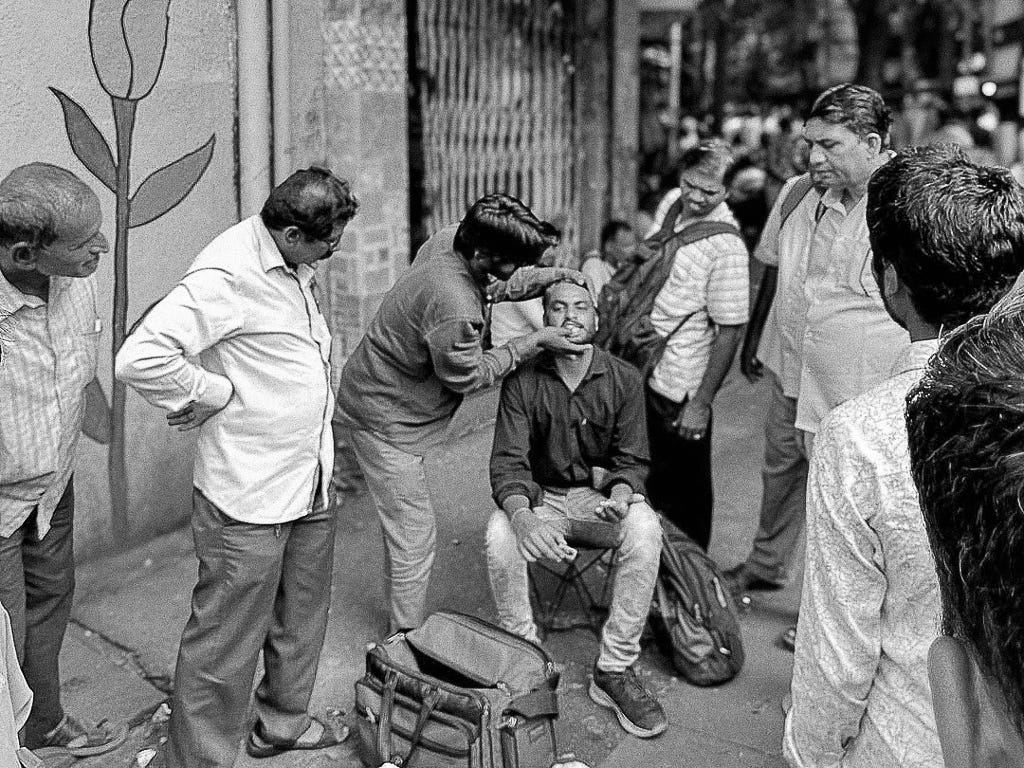
Art and organisation in a Labour Market.
An invisible worker leaves his mark.
If you want a free copy of my digital photo book Vishwakarma—The Fate of Workers in the 21st Century, send me a DM with your email, and I will send it to you. You can read it on your computer or tab.


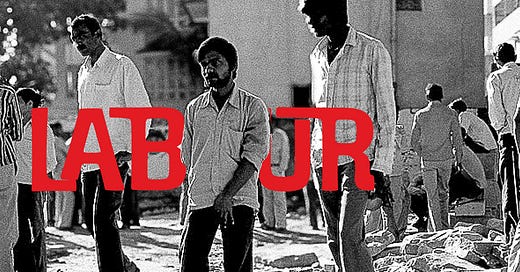



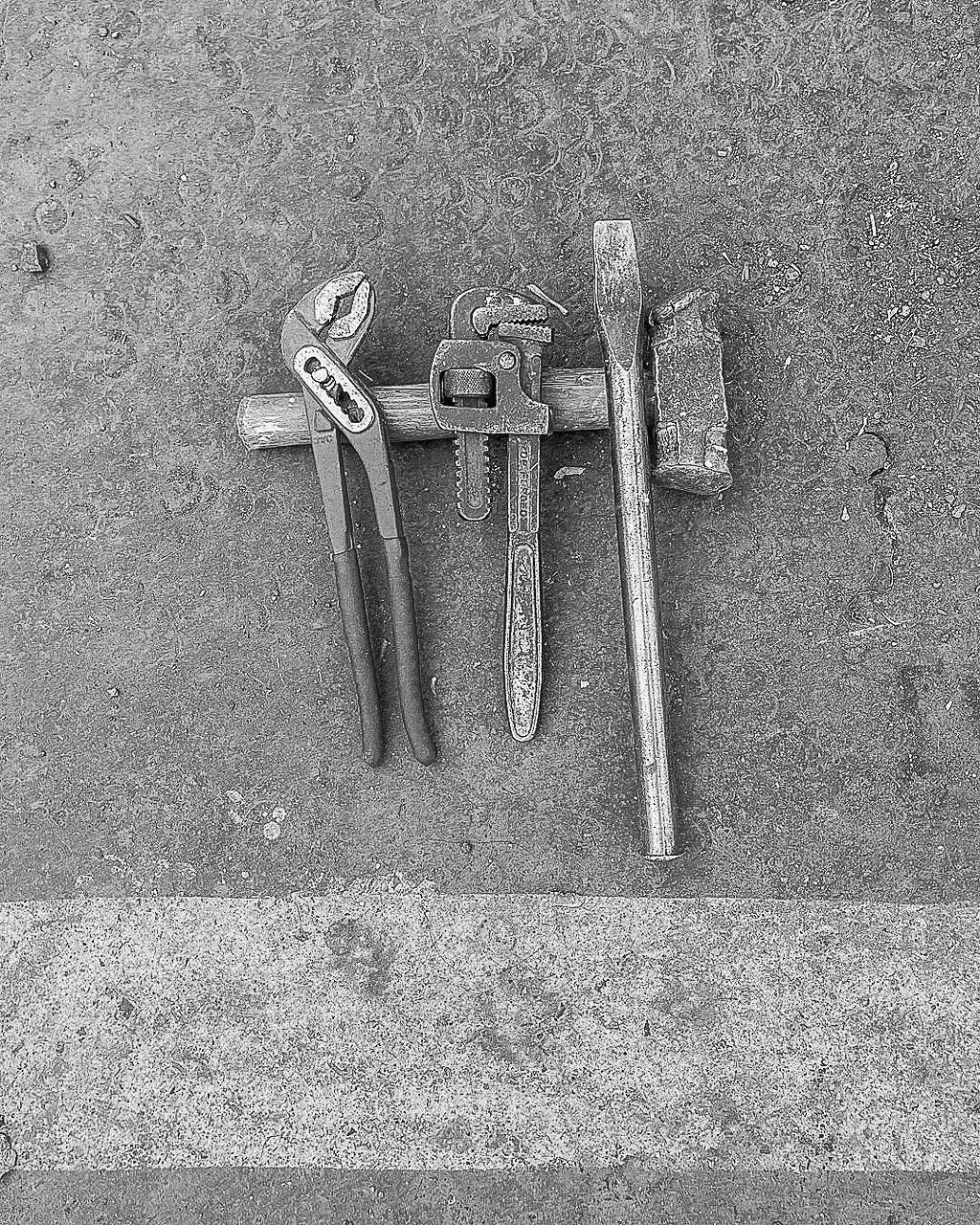
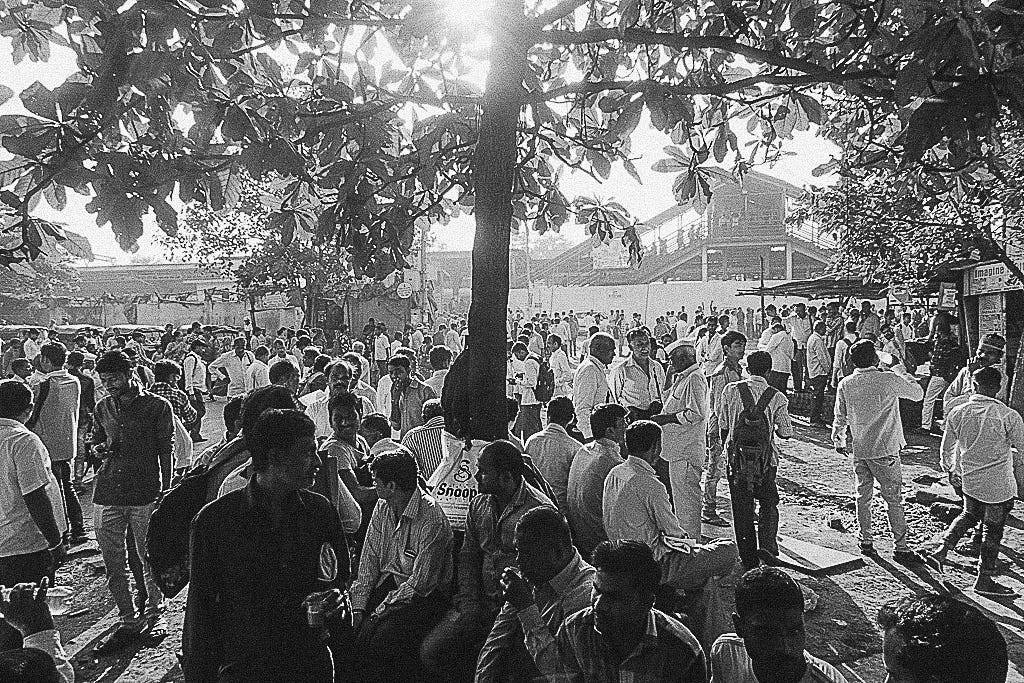
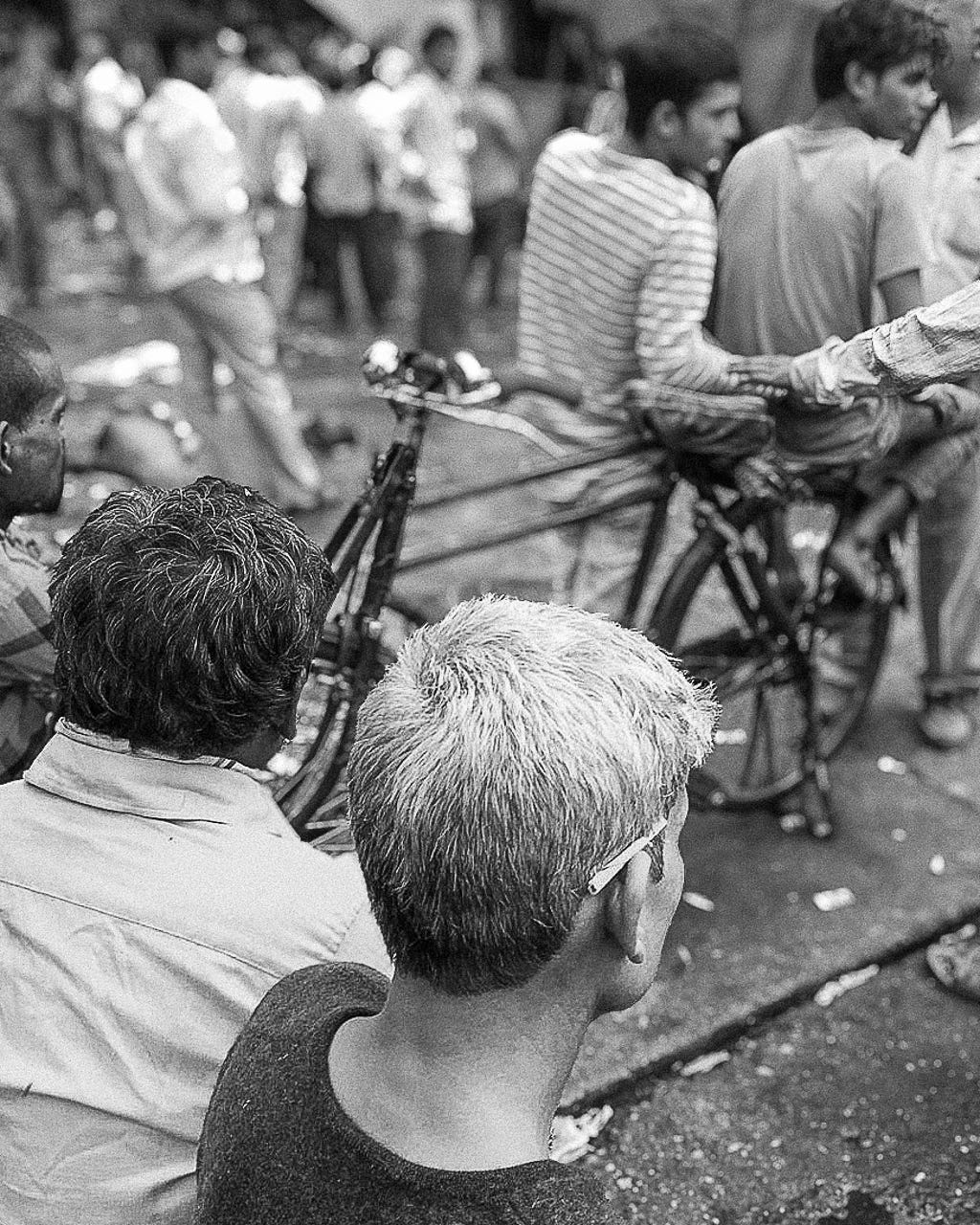
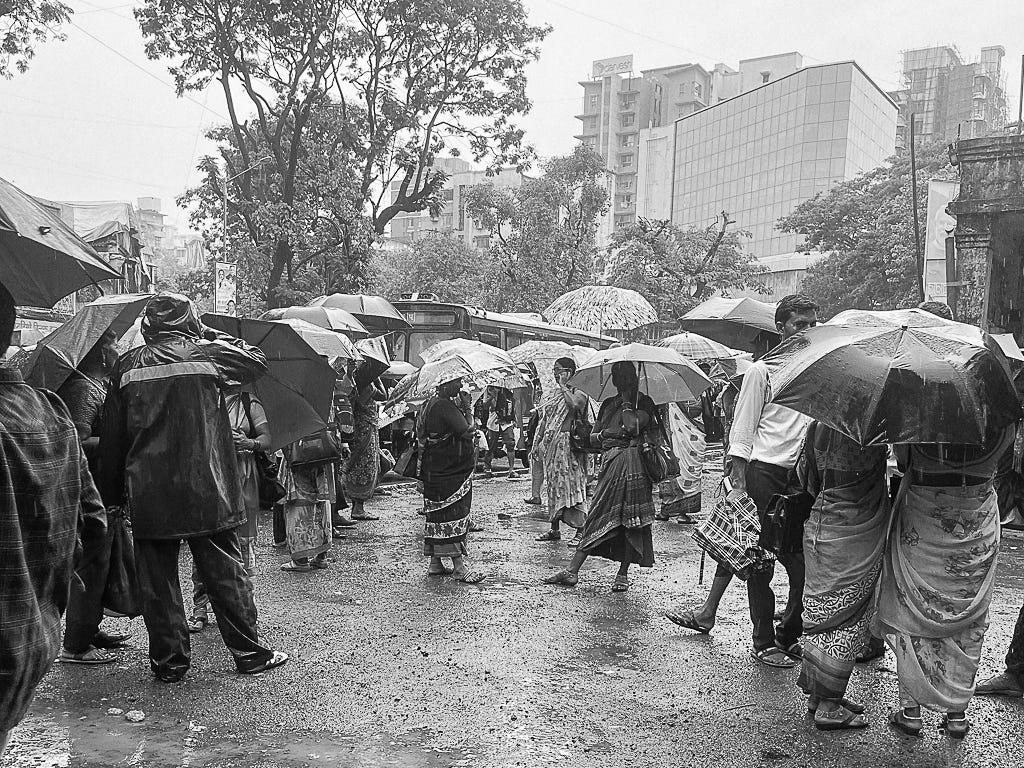
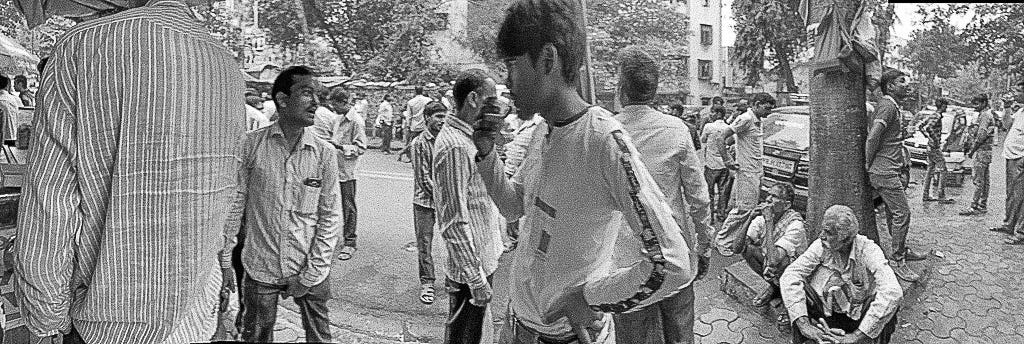
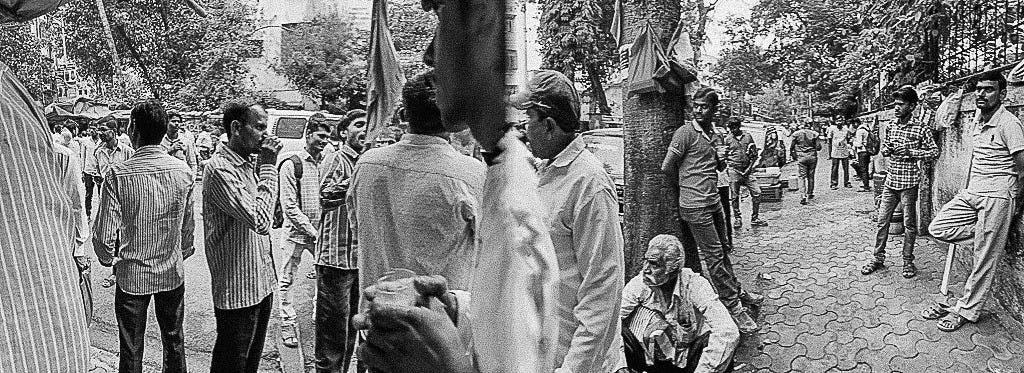
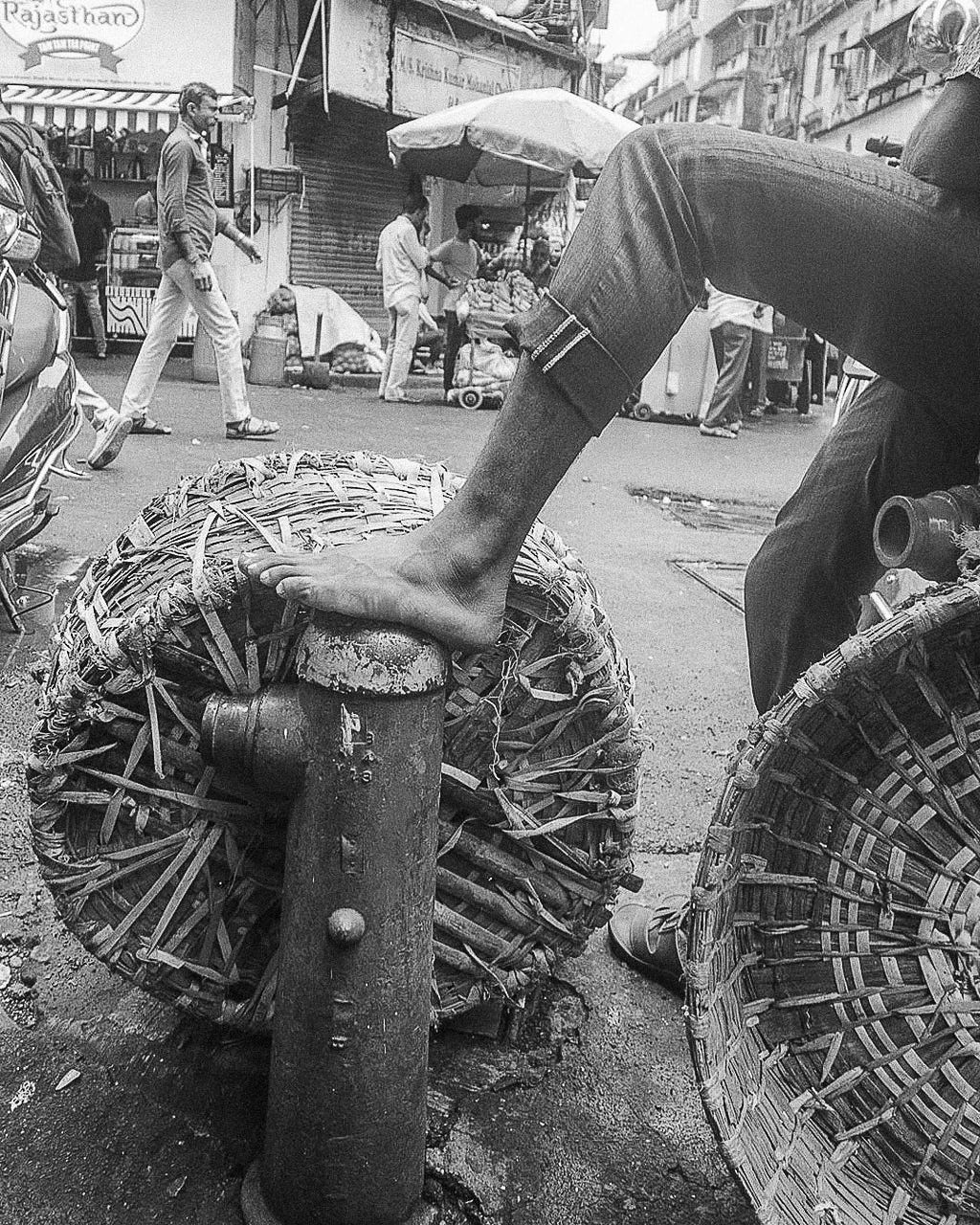
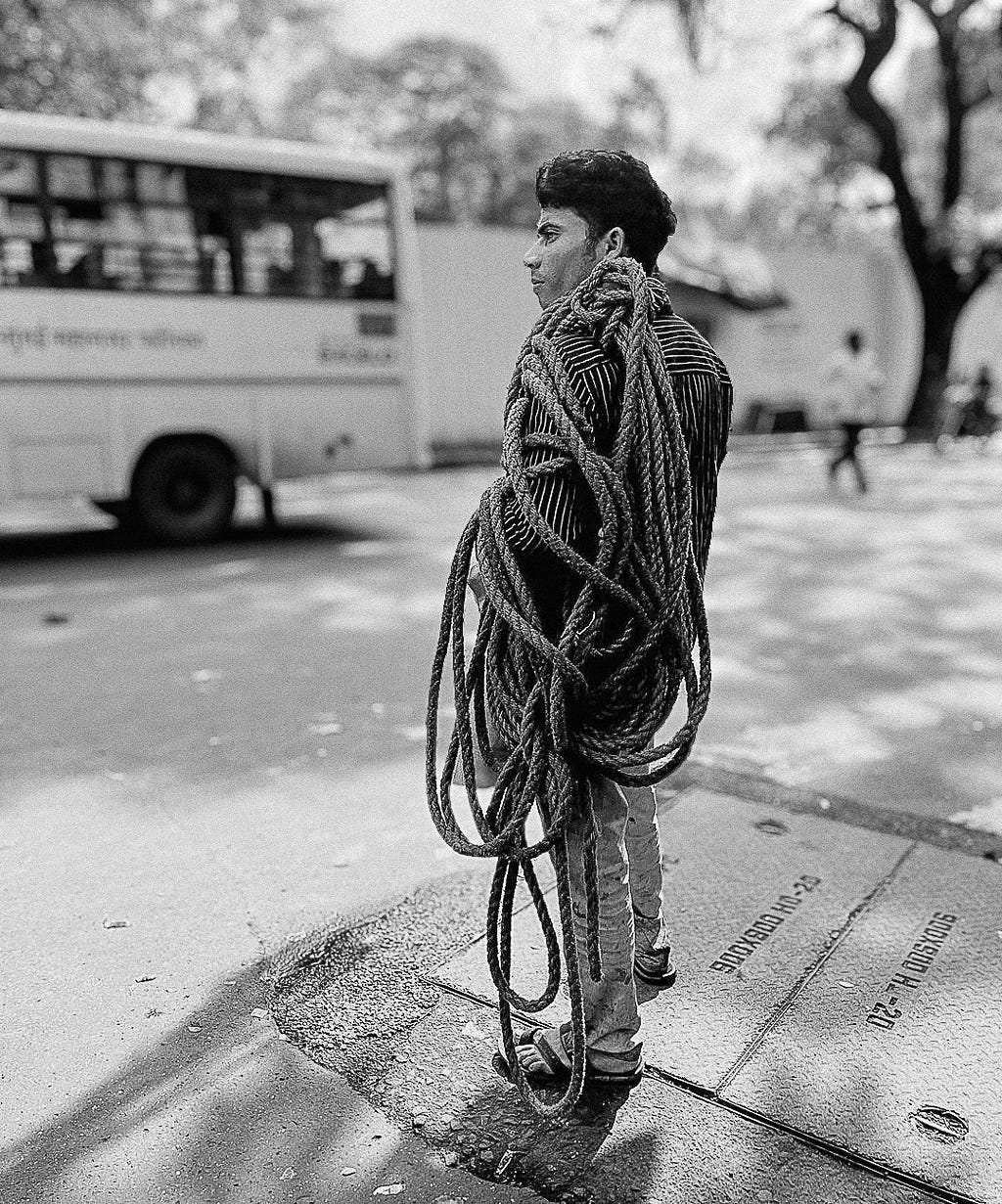
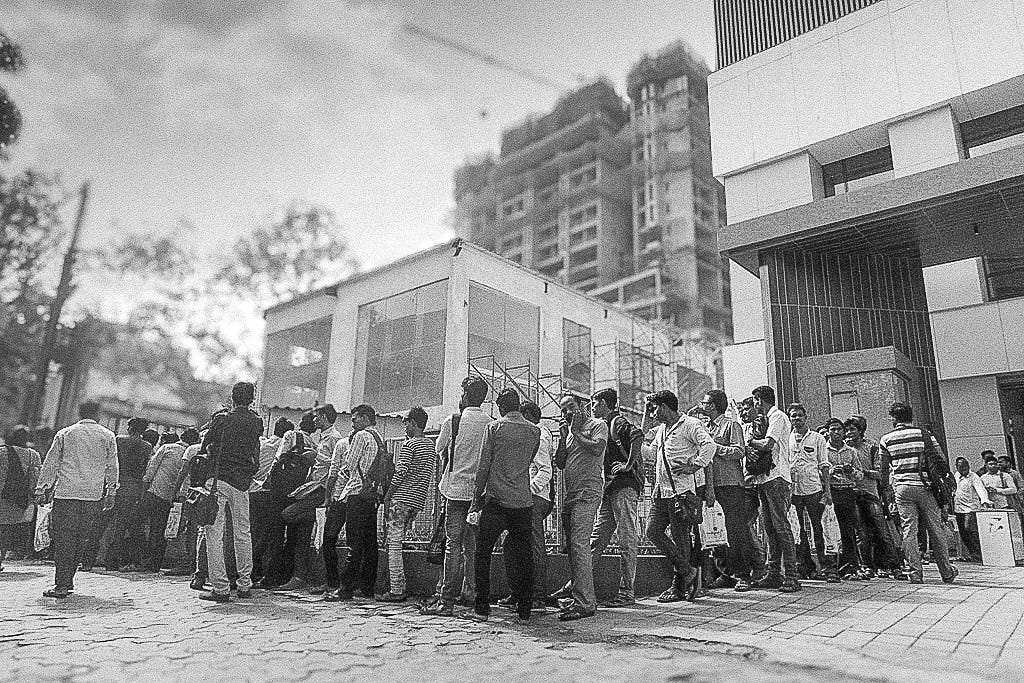
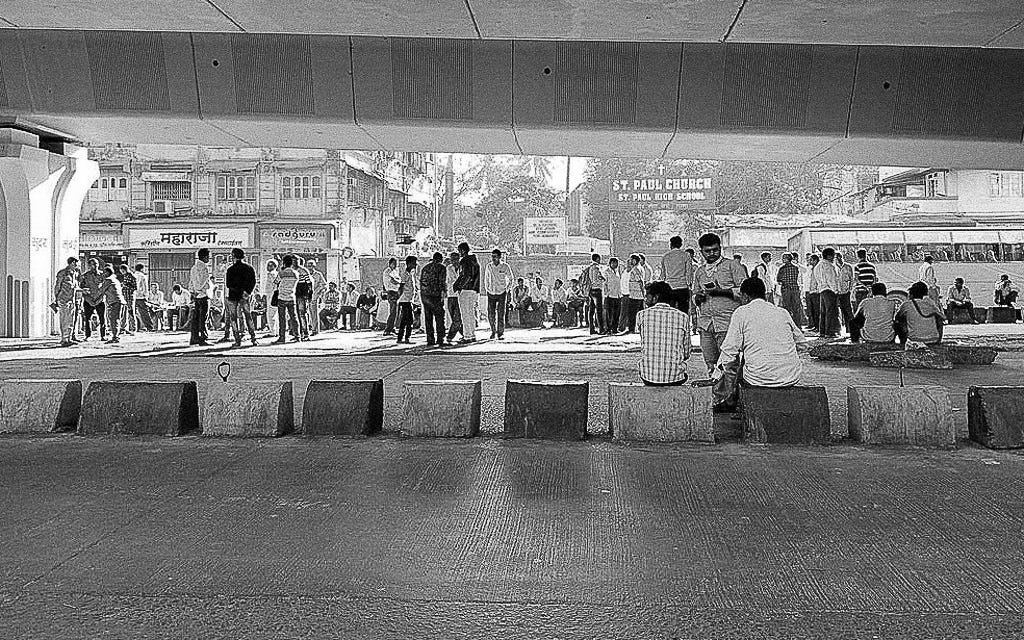
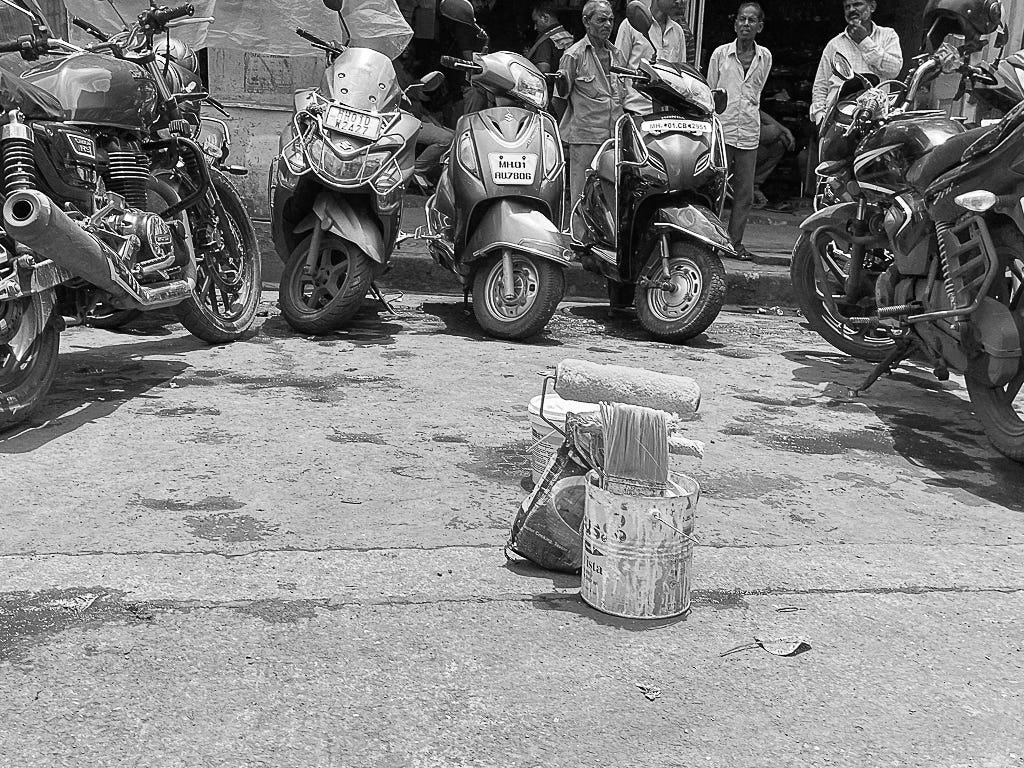
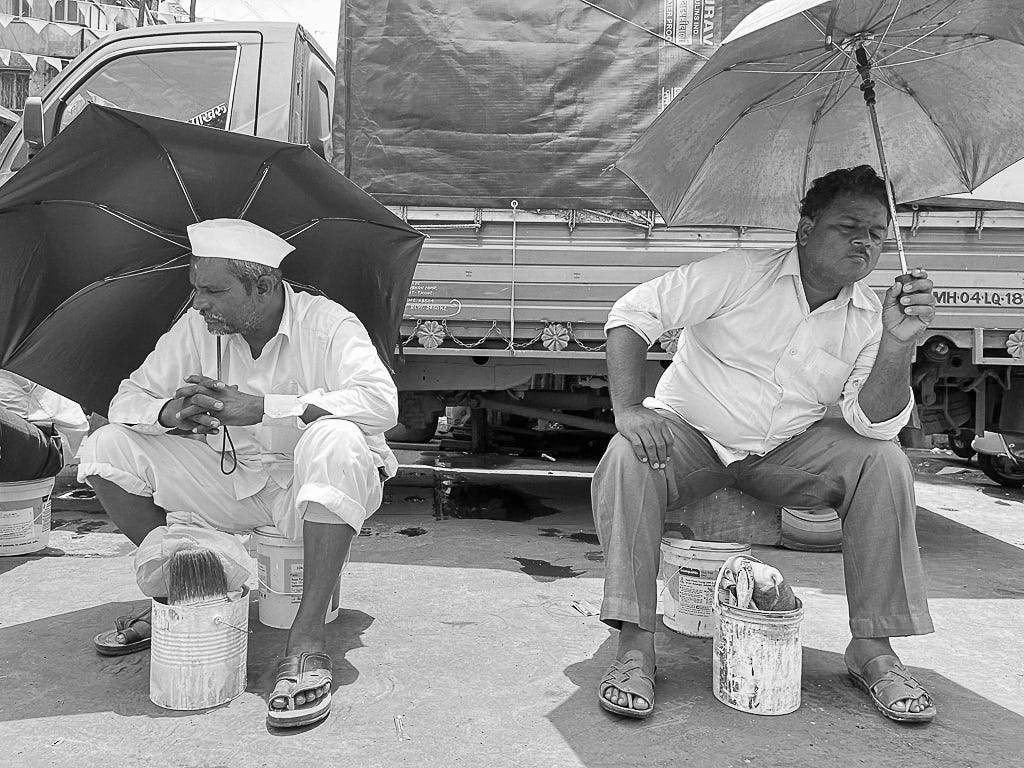
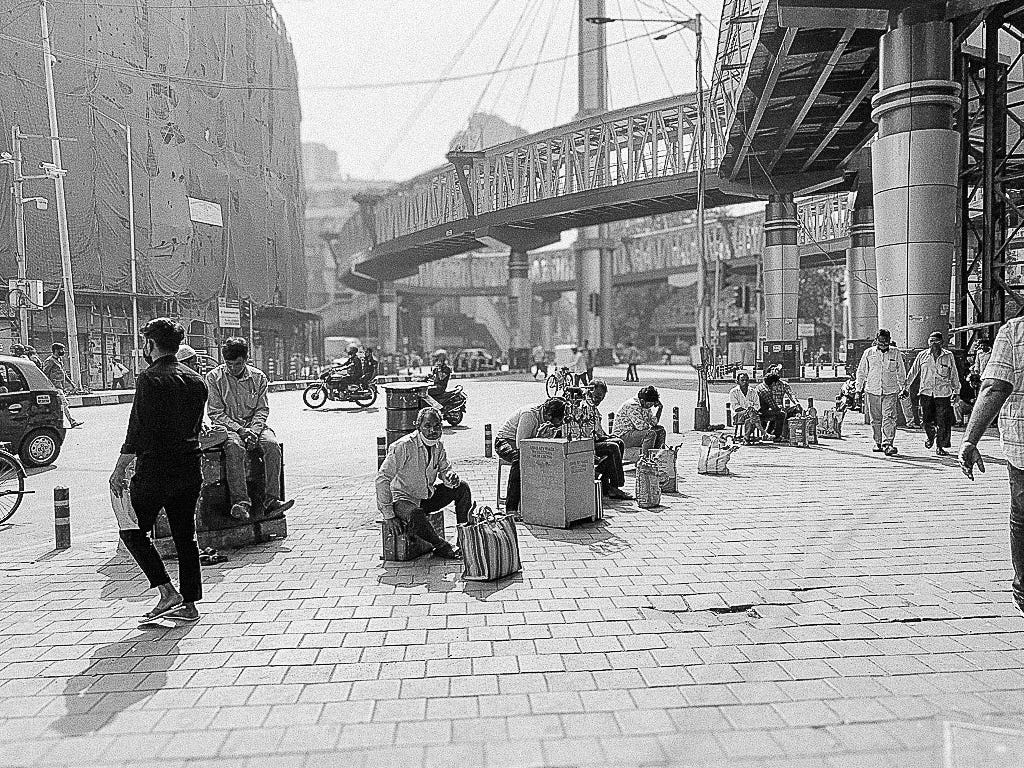
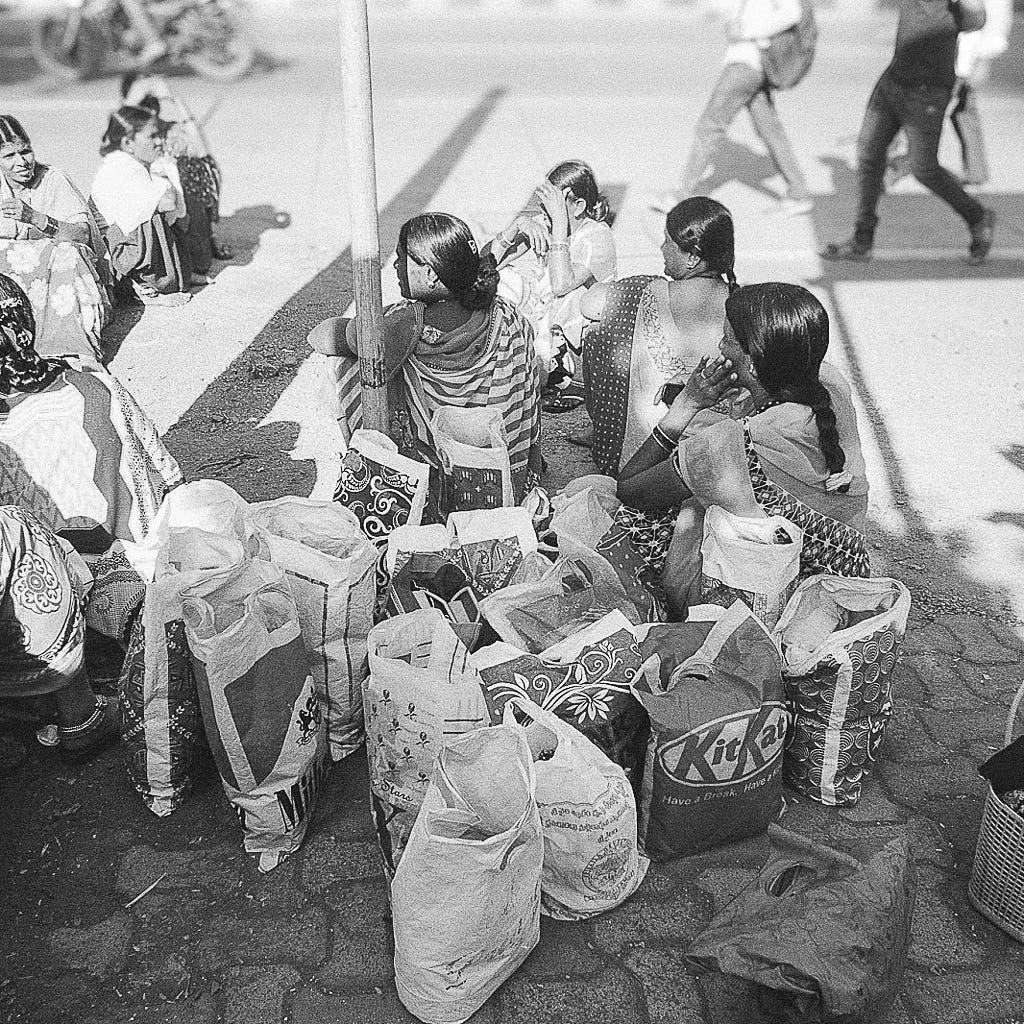
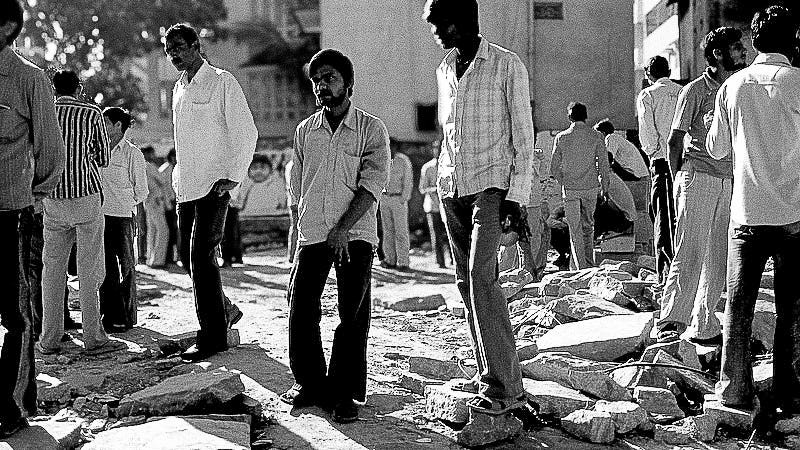

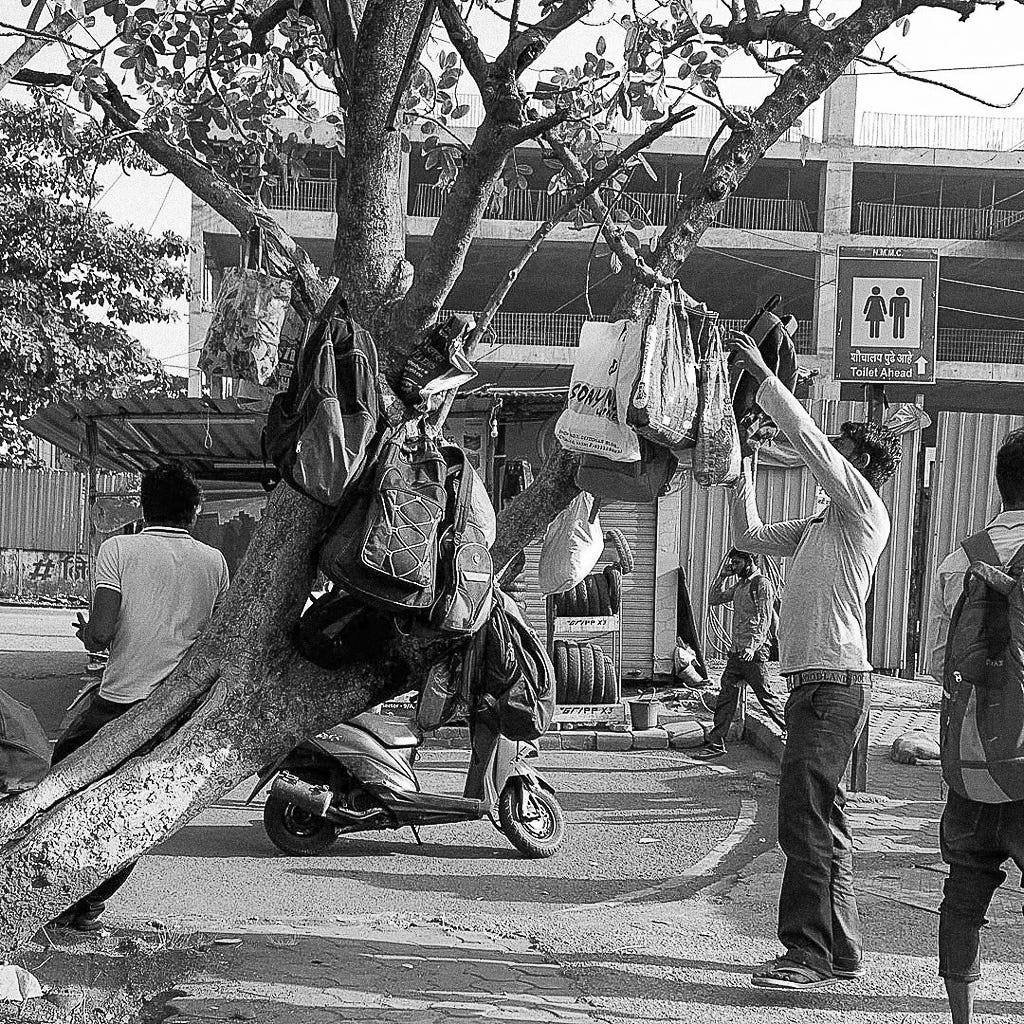
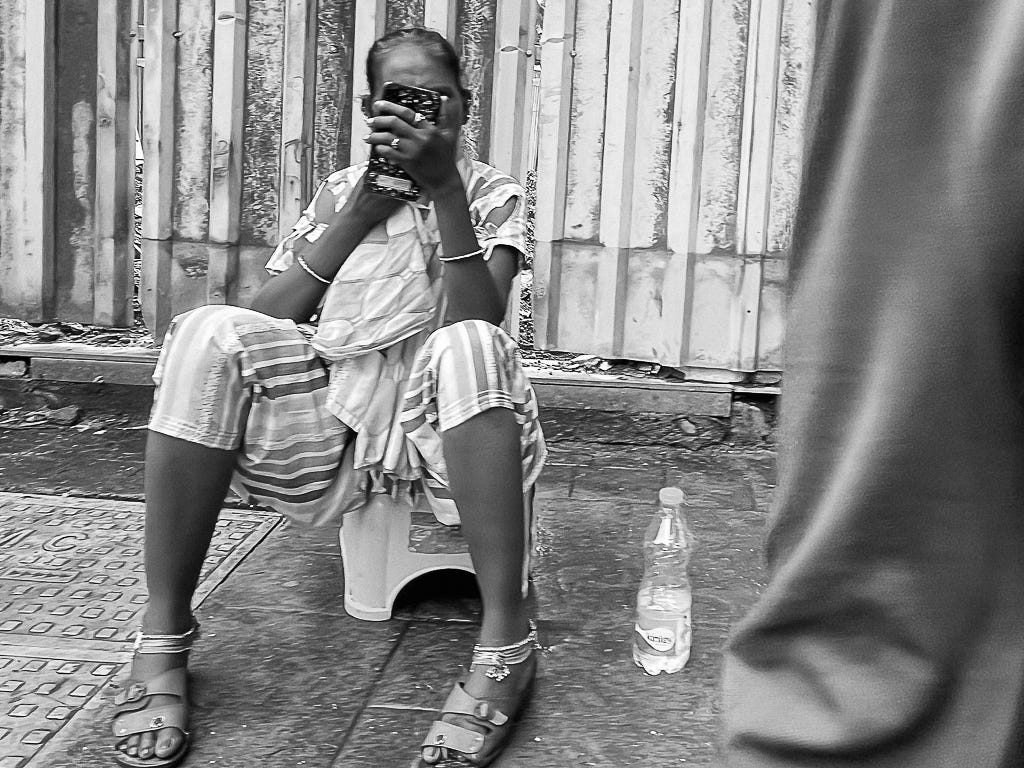
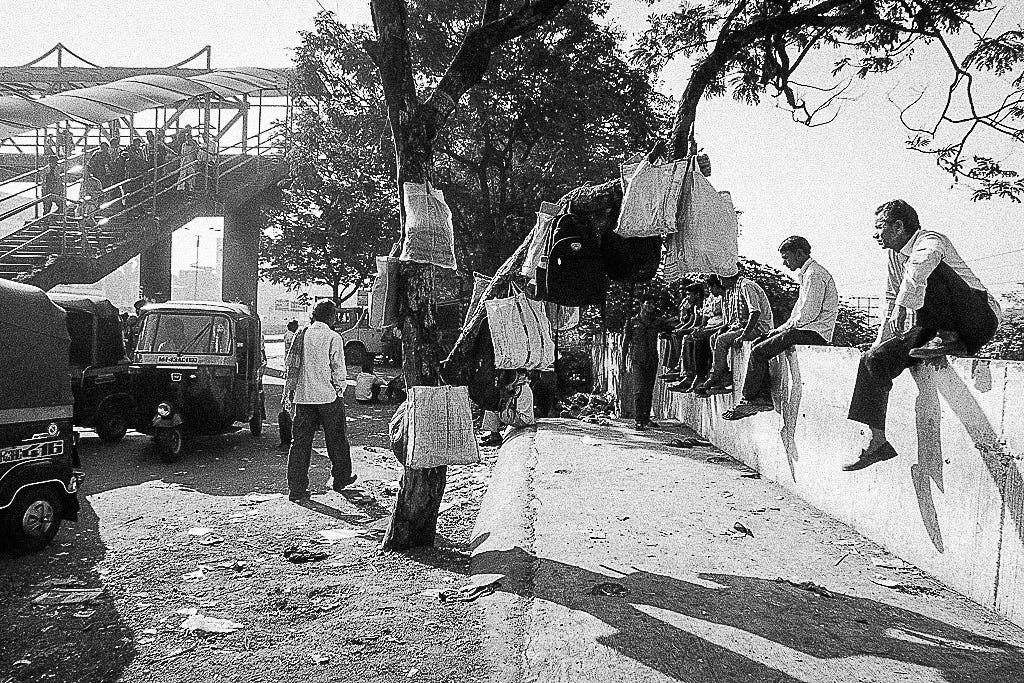
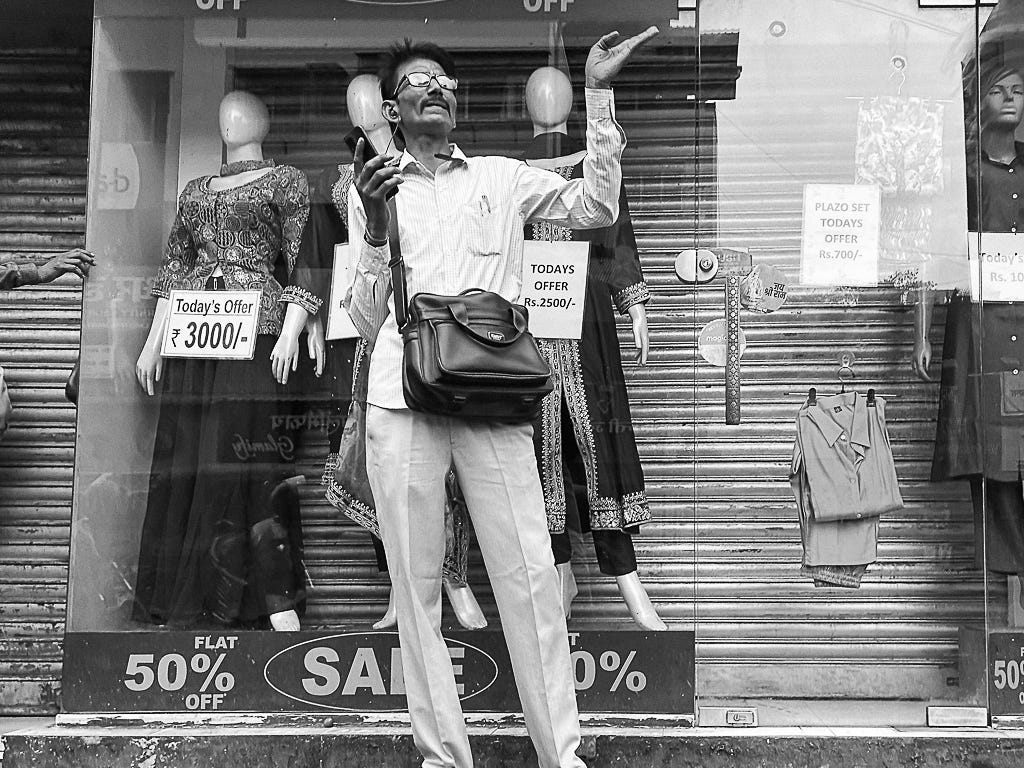

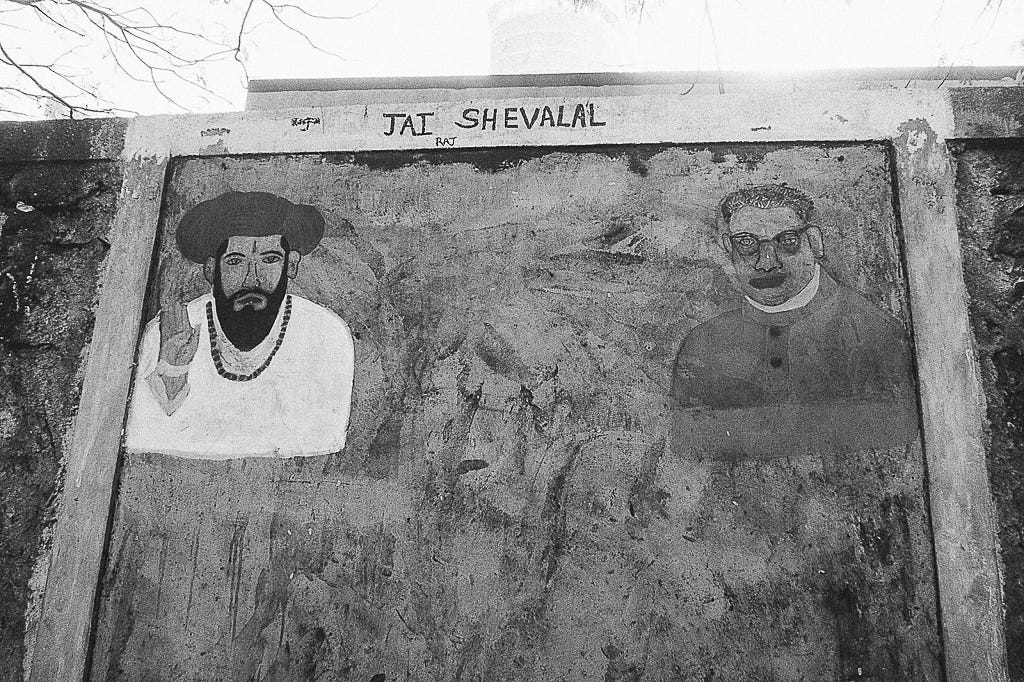
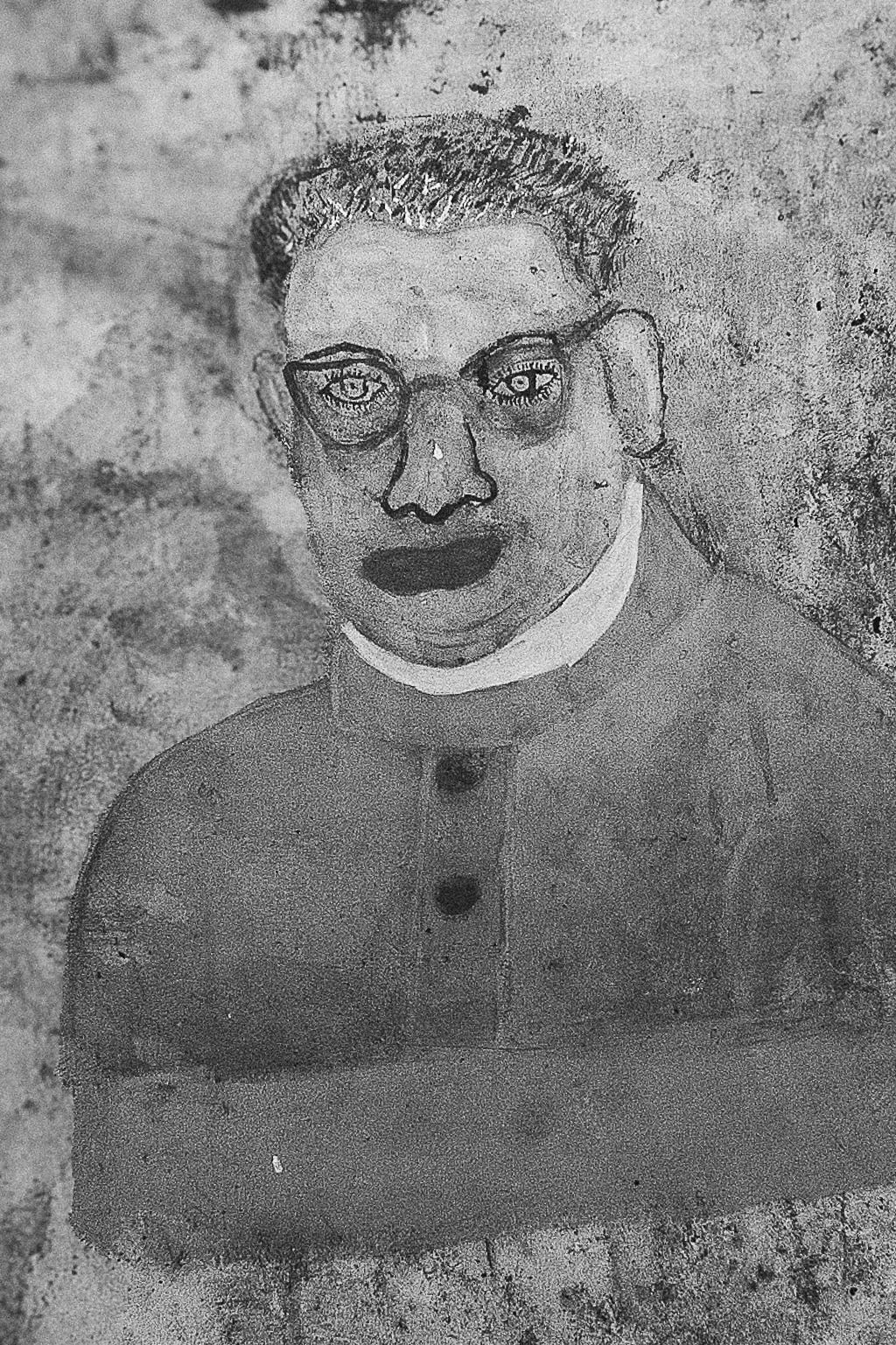
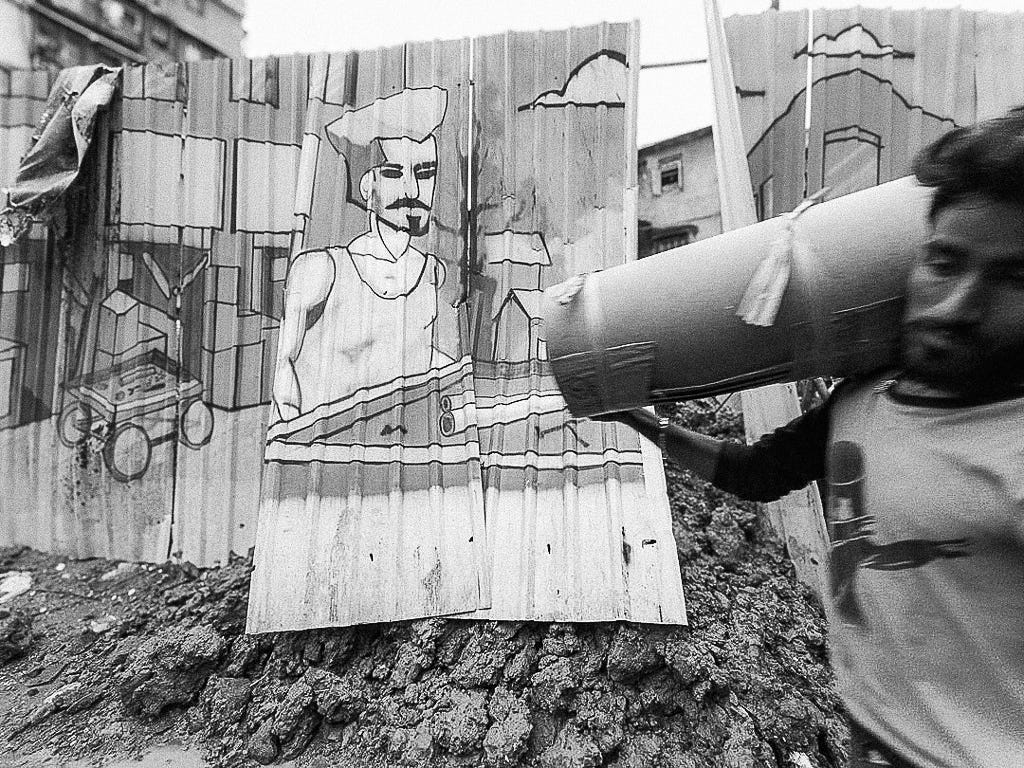
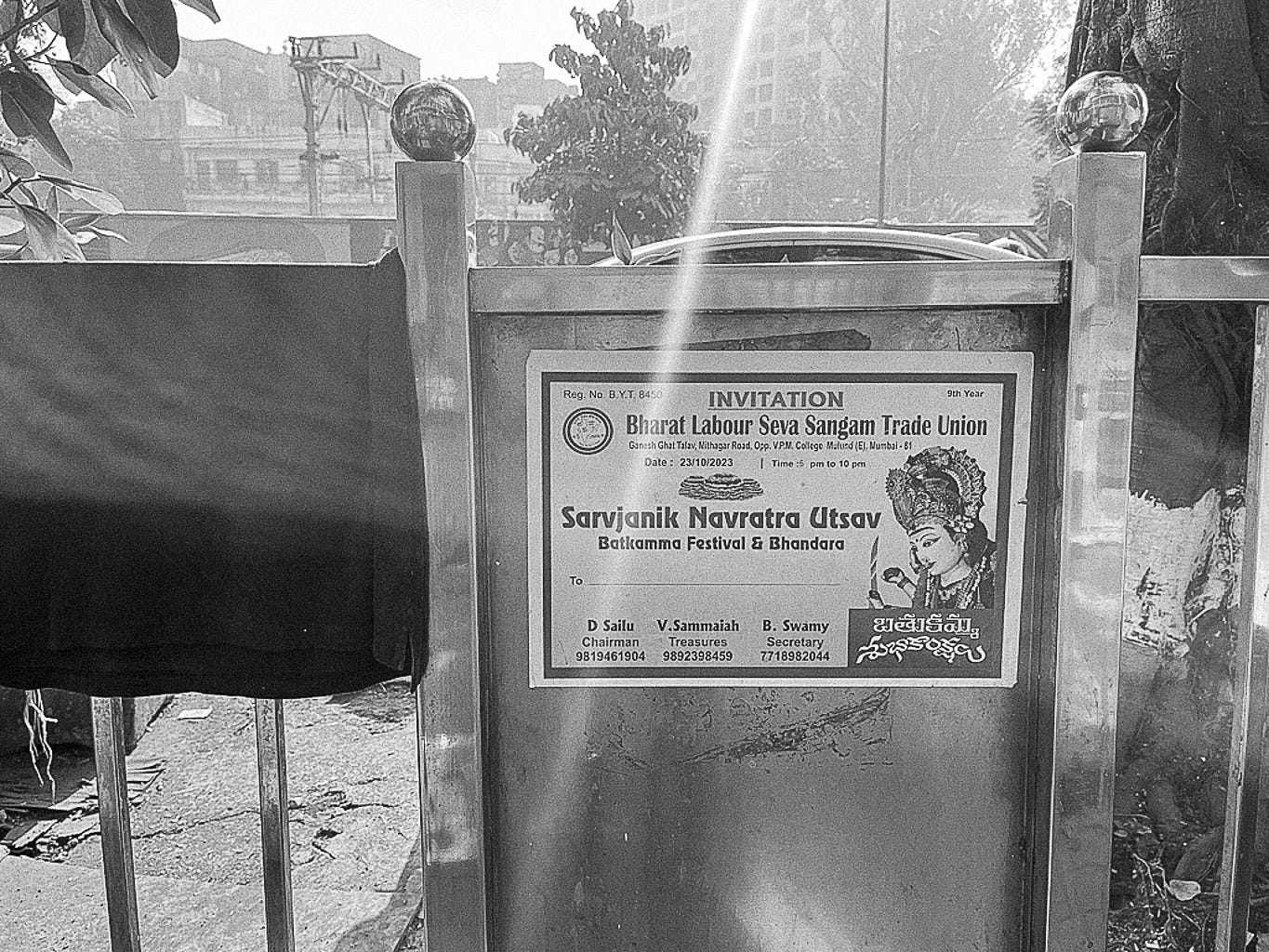
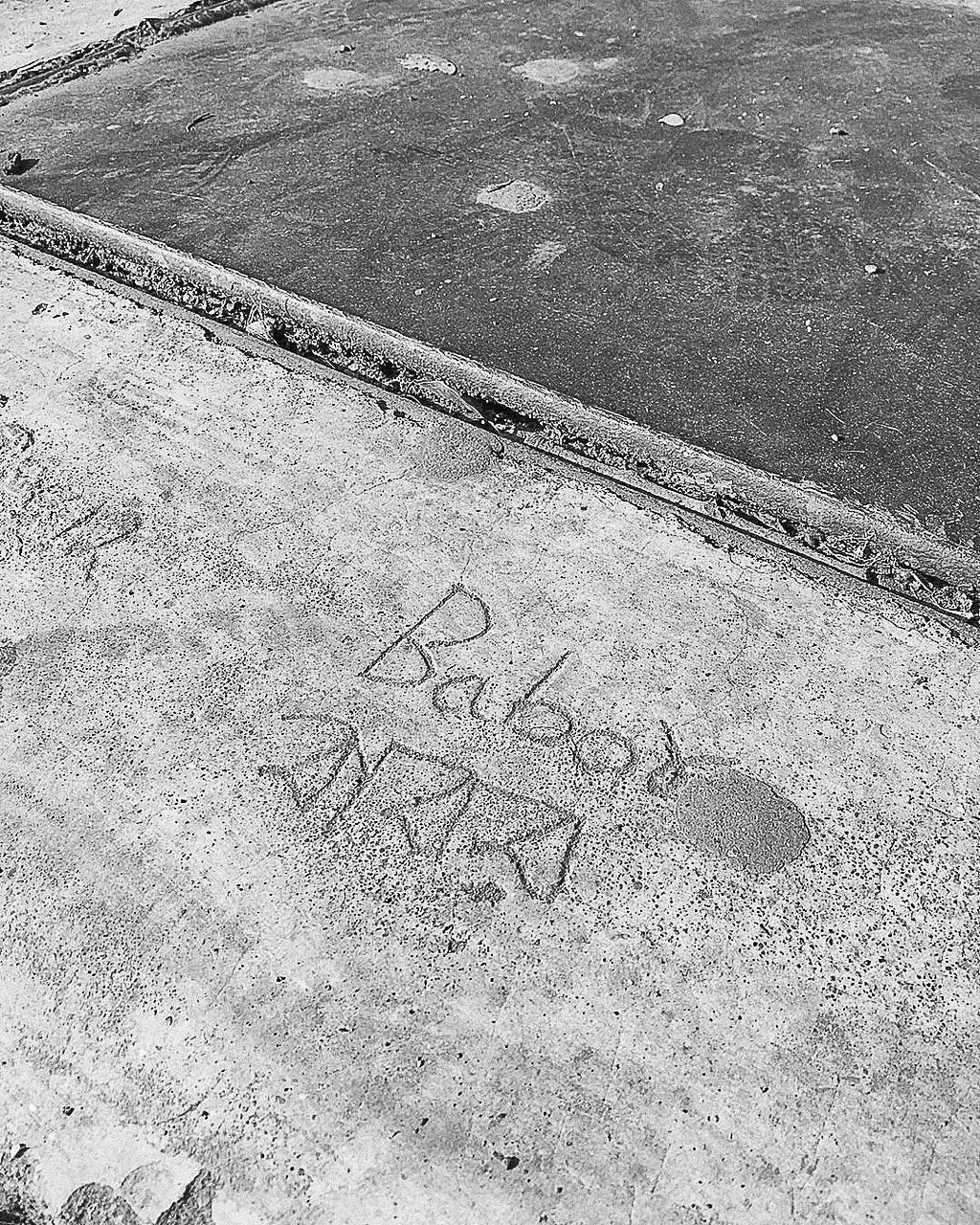
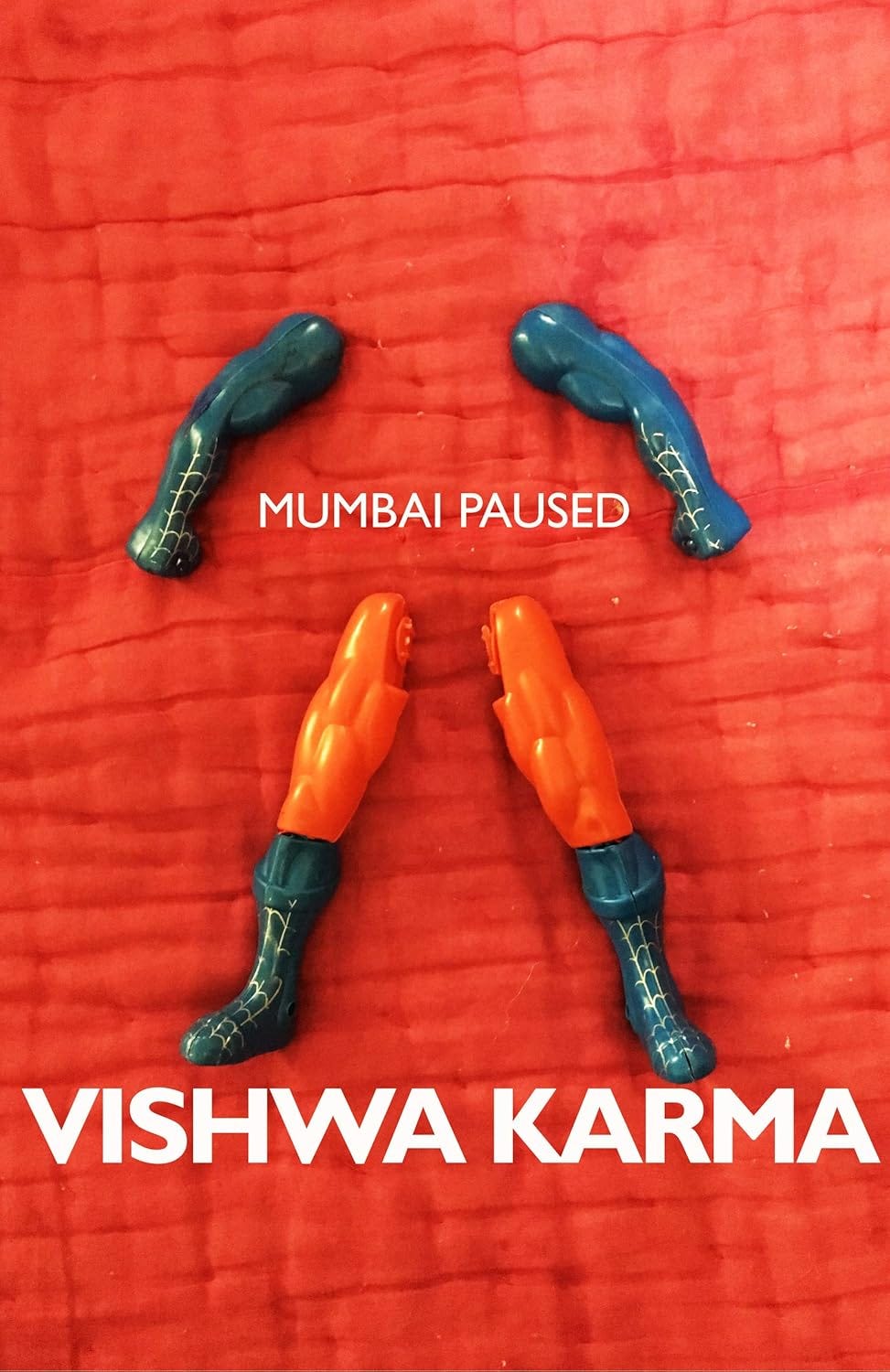
Such a gem and a great anthropological piece for decades to come.
Loved this piece!